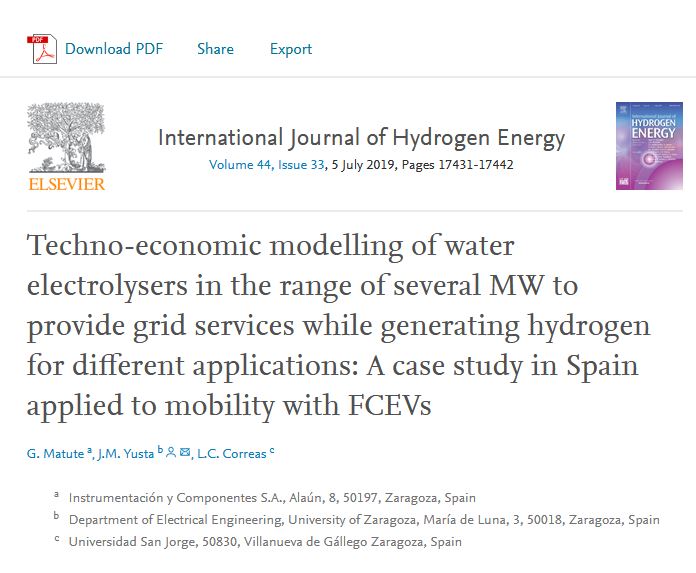Highlights
- •Techno-economic modelling of multi MW electrolysis to provide grid services.
- •Optimal economic dispatch of electrolysis units providing grid services.
- •Presentation of current and future key performance indicators for AWE and PEMWE.
- •Application of the model to a case study in Spain to supply fleets of FCEVs.
- •Sensitivity analysis of case study with different technologies and market prices.
Abstract
The use of hydrogen as energy carrier is a promising option to decarbonize both energy and transport sectors. This paper presents an advanced techno-economic model for calculation of optimal dispatch of large-scale multi MW electrolysis plants in order to obtain a more accurate evaluation of the feasibility of business cases related to the supply of this fuel for different end uses combined with grid services’ provision. The model is applied to the Spanish case using different scenarios to determine the minimum demand required from the FCEV market so that electrolysis facilities featuring several MW result in profitable business cases. The results show that grid services contribute to the profitability of hydrogen production for mobility, given a minimum but considerable demand from FCEV fleets.
https://www.sciencedirect.com/science/article/pii/S0360319919319482?via%3Dihub


